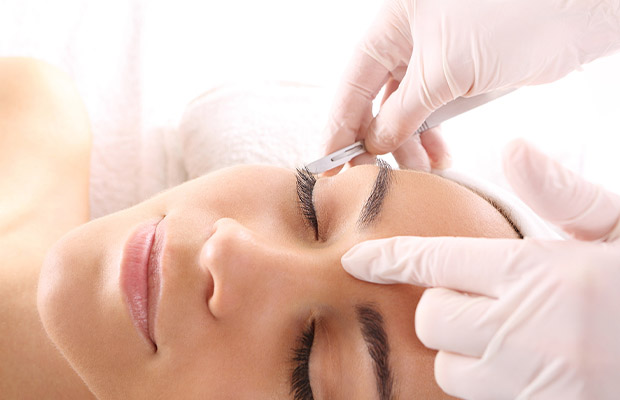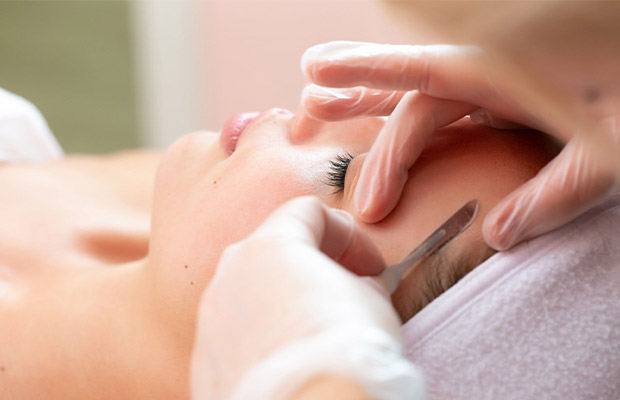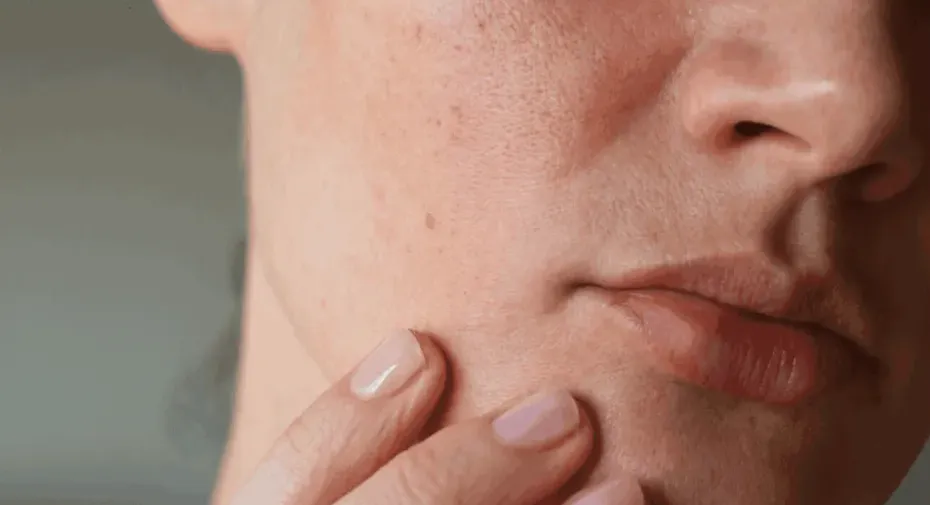Have you wondered how often should you dermaplane? In general, you can schedule dermaplaning appointments as often as once a month. Everything you need to know about dermaplaning is provided here.
Dermaplaning is an easy, quick, and efficient way to get rid of dead skin cells from your face, lessen the look of fine lines and wrinkles, and improve the appearance of your complexion.
Like shaving for men, dermaplaning is not a daily ritual. You spread it out over weeks as opposed to days. You do not experience a faster, darker, or thicker hair growth cycle.
For more information on this course of treatment and how frequently you should dermaplane, continue reading.
What is a Dermaplane Facial?
Dermaplaning is a non-invasive exfoliating treatment that removes layers of dead skin and peach fuzz with an exfoliating device. The goal of a dermaplane facial is to improve the texture and tone of your skin.
With this facial therapy, your body produces more collagen, which reduces wrinkles and increases skin elasticity.
How Does Dermaplaning Work?
The dermaplaning process starts with a consultation visit. You will discuss your treatment objectives with the dermatologist during this initial appointment, learn about your options, and develop a strategy to get healthy, attractive skin. The preparation process will begin if you and your dermatologist decide that dermaplaning is the best option. This might entail giving up the use of skin-exfoliating products two weeks prior to dermaplaning. A week or so before the treatment, you must also stop physically exfoliating (using scrubs and exfoliating brushes).

Additionally, you should limit your sun exposure the week before treatment and refrain from any hair removal procedures, including shaving, plucking, and waxing. Apply sunscreen before getting a dermaplaning facial if you don’t do it already every day. Apply topical moisturizers to your skin at least twice daily, drink plenty of water to hydrate your skin from the inside out, and make sure your skin is moisturized before your dermaplaning appointment. You might need to change your appointment if you discover any cuts, sores, or wounds in the days prior to your dermaplaning facial.
Cleanse your skin with a mild cleanser the day before your dermaplaning procedure. Applying cosmetics or makeup is not recommended. Your skin will be carefully examined by the dermatologist, who will also apply pre-treatment products.
After that, the dermatologist will delicately remove the fine hairs and outer layers of skin with a surgical-grade blade. You shouldn’t experience anything other than a gentle movement across the skin’s surface during the dermaplaning procedure because it is painless. A dermaplaning facial typically lasts between 15 and 30 minutes, depending on the treatment area.
How Often Can You Do Dermaplaning?
In general, you can schedule dermaplaning appointments as often as once a month. This is due to the fact that regular exfoliation is excellent for your skin and that most skin types can benefit from an appointment once a month. On the other hand, people with sensitive skin and mature skin might benefit from a different treatment frequency.
Sensitive Skin
Manual exfoliation is one external stimulus that sensitive skin responds to strongly. Too frequent exfoliation treatments may irritate sensitive skin or develop new sensitivities to skincare products because sensitive skin has a thinner lipid barrier. Those who have sensitive skin may benefit from using this treatment every six to eight weeks.
Mature Skin
Mature skin has a slightly slower natural cellular turnover cycle, which is closer to 40 days than 28. People with mature skin may want to get this treatment once every other month to get the best results because you should avoid over-exfoliating. If you use retinoids at home, this is especially true.
What Are the Benefits of Dermaplaning?
From facials to cosmetic surgery, there are many ways to help improve the appearance of the skin, and each one has advantages. If you’re still trying to determine whether or not dermaplaning is the right option for your skincare needs, consider the following benefits of dermaplaning facials:
- Dermaplaning gives patients healthy, softer skin without harsh exfoliants that can irritate and cause inflammation
- Collagen production increases following dermaplaning, diminishing the appearance of fine lines, wrinkles, and acne scars as well as promoting skin elasticity
- Removal of dead skin cells and leaving healthy cells exposed, so they can absorb skincare products used to treat chronic skin conditions, improve appearance, or generally keep skin healthy
- Unlike more advanced cosmetic dermatology options, dermaplaning is gentle, and it requires no downtime
- Dermaplaning is effective on all skin types. Even people with sensitive skin can receive this treatment without adverse effects
- Acne breakouts and clogged pores can be prevented when patients dermaplane as part of their regular skincare routine
- After you dermaplane, you’ll notice that cosmetics apply evenly and you don’t see areas where makeup clumps or accumulates
Can I Dermaplane at Home?
No, is the short answer. Dermaplaning is not something that patients should try at home. The majority of home dermaplaning kits are actually just dry shaving kits. While some of your dead skin cells and vellus hairs will be removed, it may not provide you with the same level of accuracy and effectiveness as in-office treatments.
Since not all dead skin cells will be removed, you’ll probably still notice uneven skin tone and texture. In addition, professionals use surgical-grade dermaplaning equipment, which is safer and more effective than the dermaplaning equipment you can buy for home use because it won’t irritate or harm your skin.
Final Words on How Often Should You Dermaplane
Dermaplaning facials are a great way to improve the overall appearance of skin tone and texture.
Generally, you can schedule dermaplaning appointments as often as once a month.
The dermaplaning procedure might be the best option for you if you’re looking for a natural way to improve the overall tone and texture of your skin.
You May Also Like: Drmtlgy Reviews
FAQs
What Happens If You Dermaplane Too Much?
Doing it more can irritate the skin, cause dryness, or make you more prone to sunburn.
When Should You Dermaplane before An Event?
2 – 5 days.
Can You Dermaplane Your Nose?
Only the flatter planes of the face should be dermaplaned due to the use of an extremely sharp blade. The nose, neck and décolleté are not ideal areas for this treatment.




